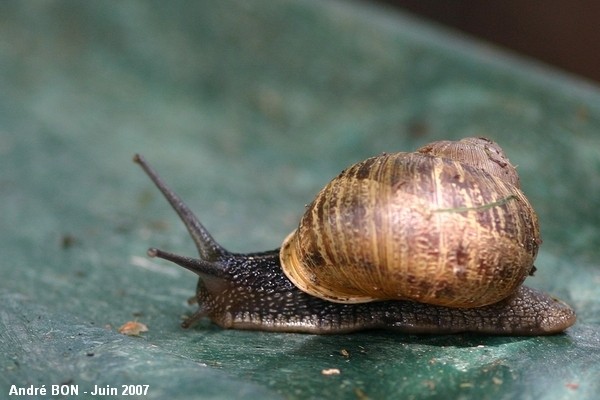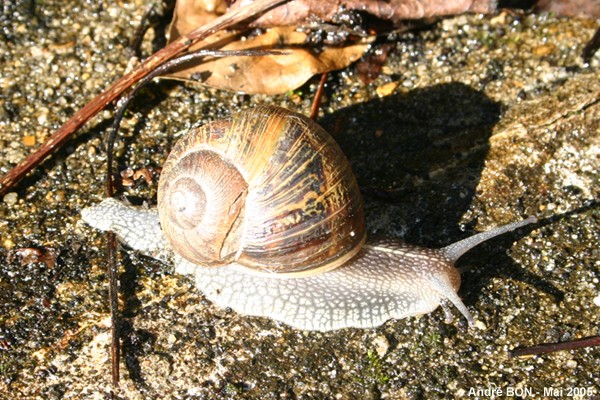

| Brown Garden Snail (Cornu aspersum (Müller, 1774)) |


|
|
Scientific name: Cornu aspersum (Müller, 1774) Common name: Brown Garden Snail Other names: Old scientific name: Helix aspersa. French name: Petit-gris Order: Stylommatophora Size: Shell's diameter 35 mm, exceptionally up to 40mm. Habitat : Various habitats including parks, gardens, hedgerows, woodlands, sand dunes, etc. Food: Vegetarian. Reproduction : Cross-fertilizing hermaphrodite. The eggs are laid in holes in the ground. Geographic area: Western Europe, North Africa, Asia Minor. It has been introduced to North America, to South America, to Australia, to New Zeeland and to South Africa. |
The Brown Garden Snail has a thick brown or yellowish shell. It shows paler spiral stripes. There are usually irregular pale cross stripes. It over winters by closing the shell's opening with a calcareous operculum. The eyes are located at the long tentacle tips. The short tentacles provide the sense of smell. The main differences when compared to Roman Snail (Helix pomatia) are: The smaller size of the shell, maximum 40 mm for Cornu aspersum while 50 mm for Helix pomatia. The shell of Cornu aspersum is irregularly wrinkled while the shell of Helix pomatia shows well marked lateral growth stripes. The last whorl, compared to the total size of the shell, is clearly larger on Cornu aspersum than on Helix pomatia. The shell's aperture is larger and curved outwards on Cornu aspersum. It is rather curved inwards on Helix pomatia. |
| [To know more about the Brown Garden Snail] [Next picture] [Top] |

|
Snails and slugs appreciate the proximity of the compost heap located in a shady corner of the garden. |
| [To know more about the Brown Garden Snail] [Previous picture] [Top] |

|
I saw this snail on the terrace on top of the garage. Virginia creeper, growing there, makes a good habitat. |